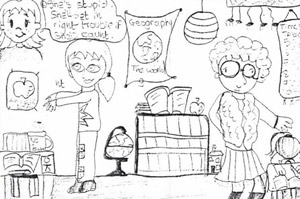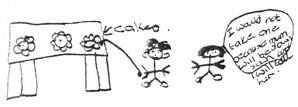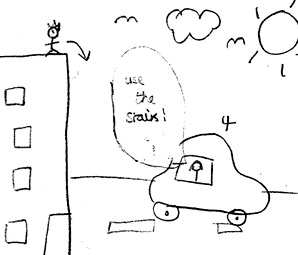It's a bit risky is this!
We live in a "risk society"; risk is everywhere and the implication is that risk should be avoided wherever and whenever possible.
Since joining RoSPA as the first risk education adviser I have been told that professionals working with children and young people are increasingly risk averse - sometimes out of concern for children's safety or fear of litigation; sometimes out of a misunderstanding of measures to regulate and control risk. Yet many professionals I meet are also concerned that by trying to reduce or eliminate risk from children's lives we are preventing them from learning their physical and emotional limits, even in everyday situations. This, they say, increases the chance of accidents when young people find themselves in new and unfamiliar situations.
In 1992 I wrote an article for Safety Education about how children of primary school age understand "keeping safe". The article was inspired by ground-breaking work pioneered by Noreen Wetton and Trefor Williams at Southampton University using the "draw and write technique". Not long after I wrote that article I embarked on a series of studies using the draw and write technique to explore how children and young people develop their understanding of risk.
There are many academic articles about how the public understands risk differently to technicians and statisticians. Developmental psychologists and sociologists have also examined how children and young people perceive risk. However most of this work begins where the relevant expert is - sometimes with a list of hazards known to cause harm to young people such as roads and drugs, or with an expert understanding of probability. These "deficit" models seek to explain why children have an imperfect view of the world and are therefore more vulnerable. The draw and write technique starts where the children and young people are. It asks what risk means to them and how would they manage the risk in that situation? As well as revealing a different aspect of risk from a child's eye, it also provides a place for teachers and health professionals to start to plan how to develop relevant, interesting and appropriate lessons for the young people in their care.
How it works
Explain to the groups that you are going to ask them to draw and write about something which different people describe in different ways. Ask them not to share their ideas with each other to begin with, so that you can all see how many different ways there are to think about this. Tell them they are going to draw and write about what risk means to them.
-
Ask them to draw someone their own age doing something risky. (It can be a stick person). Do not clarify what risky means, tell them to draw what they think it means or write "I don't know"
-
Ask them to write, under the picture, what is happening in the picture
-
Ask them to write what makes this risky
-
Finally ask them to return to their drawing and draw themselves in the scene. What would they be doing or saying to help?

The first thing we learn from this research is that young people (and many adults!) equate risk with danger. They demonstrate this with drawings of people their own age teetering on the edge of high buildings, on cliff edges, falling from aeroplanes or tightropes and bungee jumping. When asked what makes it risky some children write: "It's risky because it is dangerous."
Danger is one end of a continuum of risk, where the consequence is both severe and highly probable. Other hazards are associated with less severe consequences and a lower probability of harm and are at the opposite end of that continuum. These risks are sometimes depicted in examples of "misbehaviour" - such as taking another biscuit when mum has told you not to. The consequence from the child's point of view is of being told off (perhaps not very likely, or not too severe and so a risk worth taking). Of course the mother may perceive the risks rather differently and may be more concerned with preventing her child from becoming overweight, or not having enough to last until the next shopping trip.

Some young people combine hazards with other behaviours, so smoking cannabis can be seen both as a risk to health and as misbehaviour, where the harm comes from getting caught.
The research, now carried out with thousands of children and young people reveals patterns in the hazards they identify and their approaches to managing the risk.
For example, the frequency with which road hazards appear in the samples vary with age, peaking among 9-13 year olds and again at age 16-18. The context differs though - while the younger group draw cycle and pedestrian accidents, the older group depict themselves as drivers or passengers in cars, often in situations where the driver has been drinking alcohol. Boys more often depict scenes where the risk taking is deliberate, such as playing "chicken" by running across a busy road. Girls are more likely to perceive consequences for other road users and the friends and families of road accident victims than boys at the same age.

Of most concern to teachers and safety professionals whose pupils have taken part in this research is the lack of awareness of how to manage or control risks in unfamiliar situations. Children are able to give good advice to the person in their picture about crossing the road safely or riding bicycles in the dark, but they are on more shaky ground when knowing what to do if a friend is drunk, on drugs or committing a crime. In a survey of 6,000 11-18 year olds in Essex schools only two young people would have involved an adult. This is perhaps the most worrying finding of all. Why are children and young people unlikely to call on adult help and support when they or their friends are at risk? Is the fear of being told off so great, or are they simply unaware of the services and support available to them?
Risk is a concept which underpins so much of the work done in personal, social and health education, not just in injury prevention. This research technique, used a classroom activity can help teachers start where their pupils are in their understanding of risk, challenge and build on that understanding and help them to see how, by recognising their personal response to risk, they can help to keep themselves and others safe - while having fun and learning from their experience. As RoSPA's risk education adviser I hope to be able to persuade policy makers and practitioners that risk is a concept which can be taught and can add value to existing good practice in PSHE.
Example classroom activity
To help young people understand the concept of risk [suggested for Key Stages 2-4]
Carry out the draw and write activity with your pupils. Invite them to share some of the hazards they have identified (for example, high places, misbehaviour, roads, alcohol, illegal drugs, fireworks, railway crossings). Write each one of these on a separate sheet of A4 paper, so that it can be read from the back of the room, and add a few of your own. These could be inspired by a particular issue you want to raise, or an activity you are planning for them. The following examples might be appropriate for pupils in Key Stage 4: leaving a drink unattended at a party; canoeing; chatting to someone on the internet. Include at least one activity where the sense of danger (and thrill!) is high, but the risks are carefully controlled, such as a roller coaster ride.
Now invite individual pupils to select one of the hazards and stand on an imaginary line at the front of the class, where high risk (severe consequences, highly probable) is at one end and low risk (least severe consequences, low probability) at the other end. Ask them to hold their "hazard" sheets so others can see the. When they are in position ask the rest of the class if they agree. If anyone disagrees, ask them to take that hazard and change places. Do this a few times so that it is clear that different people see risk differently. Are there any examples where most people agree?
Now invite the pupils to get into groups to discuss some of the more risky activities. What steps would they take to manage or control the risk, so that the probability of harm is reduced - and the possibility of benefits is increased? Encourage them to identify sources of adult help and support where appropriate.
Invite them to reflect on what they have learned about risk by doing this activity? Ask them to imagine that they have a risk thermostat which experience has set for them. Where is their personal risk thermostat set? Do they like to take risks, or do they prefer not to take risks?
Jenny McWhirter
This article first appeared in the RoSPA Safety Education Journal - Spring 2007